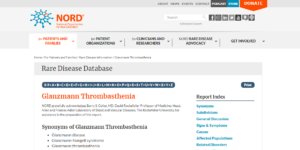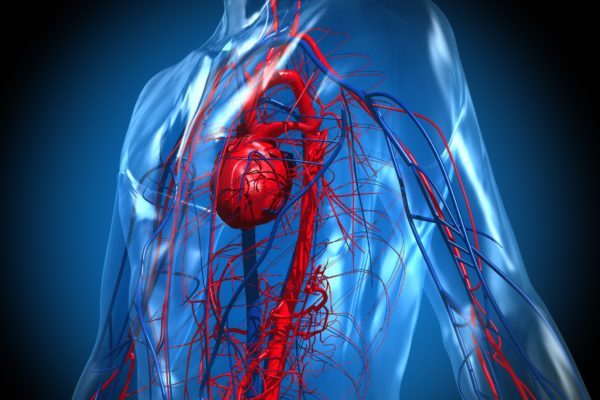
National Organization for Rare Disorders (NORD) – Glanzmann Thrombasthenia (English)
Glanzmann's disease, or Glanzmann’s thrombasthenia, is a rare condition in which the blood platelets (thrombocytes) don’t work properly. Thrombocytes are components of the blood and function in the clotting of the blood after injury to stop the bleeding. On the surface of thrombocytes are proteins present that enable thrombocytes to stick together and form a thrombus (blood clot). In Glanzmann’s disease, one of these proteins is lacking, resulting in abnormal function of the coagulation (clotting of the blood). A person with Glanzmann’s disease is very susceptible to bruising and spontaneous, severe bleeding.
This condition was first described in 1918 by the Swiss pediatrician Eduard Glanzmann. The Glanzmann’s Research Foundation is committed to raising funds for research on this disorder.
Bleeding and bruising are the hallmark symptoms of Glanzmann’s disease, generally occurring in mucosal tissue:
Glanzmann’s disease is an inherited disease which affects both men and women. It is caused by a defect (mutation) in the genetic material (DNA) of chromosome 17. One of the proteins on the surface of the platelets, called glycoprotein IIb/IIIa, is lacking. Normally this protein plays a role in platelets sticking together in order to form a blood clot.
When there is a clinical suspicion of the presence of this disease, the physician will then refer the patient for a platelet aggregation study, which will reveal poor clumping of thrombocytes in the presence of this disease. Glanzmann’s disease is definitively diagnosed by the determination of a deficiency of the cell-surface glycoprotein IIb/IIIa. This can be done by flow cytometry or monoclonal antibody testing. In both cases, a sample of the patient’s blood will be taken.
Treatment focuses on both prevention and intervention:






